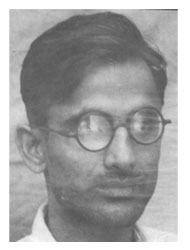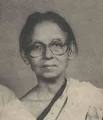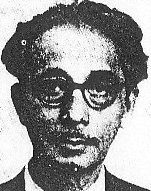Campus Violence has been a public concern and a cause for national anxiety since 1973. Barring stray incidences, campus violence was not experienced during the British period, though even then all major political parties had their supporting student fronts and though communal violence was then extremely high. Until 1947, the politically active part of the student community was committed to political questions like anti-colonial movements, flanked by Indian nationalism on the one hand, and Pakistan nationalism on the other. The nationalist spirit was replaced by the regional spirit during the Pakistan period. Various student organizations then rendered support to political parties in their struggles for regional autonomy and democratic rights.
Campus violence in Bangladesh may be traced back to Mohammad Ayub Khan regime when a government sponsored student organization, National Students’ Federation (NSF), was let loose to squash student movements for regional autonomy and democracy in favor of the Ayubean system of basic democracies. NSF cadres established a reign of terror in all campuses of East Pakistan, especially in the University of Dhaka. The first notable victim of the politics of terror was a NSF leader of Dhaka University, Saidur Rahman alias Panch Pattur. He was killed in 1968. An earlier recorded killing had taken place in 1942 when Nazir Ahmed, a student leader of Dhaka University, was killed in a communal frenzy. Compared to the violence record in American campuses during the same period, the murder of two students in 52 years of existence of the university is indicative of the relatively better campus situation than most American campuses.
But the scene changed after 1973. With the end of Pakistani rule, the return of student activists from war fronts, and the sharp polarization of students ideologically and politically, campuses became hot-beds of conflicts and scenes of violence. The Student League, a student organization in the vanguard of the War of Liberation, got embroiled in in-fighting over after-war ideologies and interests. One consequence of the development was the ghastly seven-murder incidence at Mohsin Hall of Dhaka University on 4 April, 1974. Since then, the politics of violence on campuses have continued unabated. Campus violence became so rampant that in course of the regimes of Ziaur Rahman and Hussain Muhammad Ershad, it drew world attention. In 1993, for example, The New York Times identified the Dhaka University as the 'most violent campus in the world'. Akhil Poddar's survey (Campus Violence in three Decades) published in the Daily Janakantha (4 May 2001) shows the causalities of campus violence in three decades since 1974 thus: murders 128, seriously wounded 4290. Campus-wise distribution of casualties is: Dhaka University 72, Rajshahi University 25, Chittagong University 11, Bangladesh Agricultural University 8, Islamic University (Kushtia) 7, and Jahangirnagar University 5.
While all significant student organizations were affected by the deadly violence, the most severely affected party was the Student League which lost 75 of its members in the last 30 years. Several causes may be attributed to the macabre campus violence, such as, factionalism, attempts to eliminate opponent student fronts and factions, occupying hall of residence for establishing dominance, tender-business, settling personal scores, and so on.
All major political parties and most political leaders maintain armed cadres who are supplied by student fronts and factions. Invariably, the armed cadres have their protectors or 'godfathers' who have the power and influence in the administration to shield them from the law. As a result, in spite of many punitive laws enacted by governments from time to time, no government has been able to restore peace in the campus.
If murder, wounding and extorting have been the most extreme forms of campus violence since 1974, in recent years, violence on female students has given a new dimension to campus violence. Rape, kidnapping, teasing and forced marriages are now on the list of incidents associated with campus violence. Among the less horrifying acts of violence are occupation by force of a hall of residence by a student party or group, ousting rival residents of a hall from their seats, forcing other bonfires residents to share their seats with their cronies, and compelling them to join party processions and movements.
Though campus violence is planned by leading student activists, its actual execution is carried out by their armed cadres who carry with them clandestinely, but sometimes very openly, weapons such as home-made bombs and crackers, knives, daggers and fire arms. They are not necessarily students. Most of them are recruited at a price from school dropouts, slump dwellers and broken families. They are trained in making and to throw bombs at targets, and in use of firearms.
There are reasons to believe that student organizations differ from each other not only in political beliefs and practices, but also in methods of perpetrating campus violence. If one party is prone to throwing bombs at targets, another to use of firearms, and still another to maiming victims. The long term trends of campus violence clearly indicate that ruling party students have been predominantly using firearms, the mainstream opposition students have been resorting to bomb-throwing, and an ideologically charged third group have been using both sophisticated fire-arms to dispirit police and opponents on the one hand, and knives and daggers to scare off their enemies by cutting their tendons and ligaments, on the other.
The methods and forms of campus violence are seen to have undergone fundamental changes. In the 1970s and early 1980s, the politics and ideologies of the time characterized campus violence. In the late 1980s, campus violence began to show symptoms of ordinary criminality like kidnapping for ransom, toll collection, influencing the administration at gun-point, rape, occupying halls of residence, tender-business and so on. In the 1990s, these sorts of violence seem to have been firmly established. One reason for such a turn of events is certainly the lack of good governance. The most violent elements on the campuses, according to newspaper reports, are the student groups and factions sheltered by the ruling party leadership. In spite of the election system, the chief executives of the campuses are appointed with the blessings and support of the ruling party, and hence, they can hardly proceed to take strong action against the cadres of the party. Campus violence is also indirectly associated with the system of education and campus management.
Campus violence in Bangladesh may be traced back to Mohammad Ayub Khan regime when a government sponsored student organization, National Students’ Federation (NSF), was let loose to squash student movements for regional autonomy and democracy in favor of the Ayubean system of basic democracies. NSF cadres established a reign of terror in all campuses of East Pakistan, especially in the University of Dhaka. The first notable victim of the politics of terror was a NSF leader of Dhaka University, Saidur Rahman alias Panch Pattur. He was killed in 1968. An earlier recorded killing had taken place in 1942 when Nazir Ahmed, a student leader of Dhaka University, was killed in a communal frenzy. Compared to the violence record in American campuses during the same period, the murder of two students in 52 years of existence of the university is indicative of the relatively better campus situation than most American campuses.
But the scene changed after 1973. With the end of Pakistani rule, the return of student activists from war fronts, and the sharp polarization of students ideologically and politically, campuses became hot-beds of conflicts and scenes of violence. The Student League, a student organization in the vanguard of the War of Liberation, got embroiled in in-fighting over after-war ideologies and interests. One consequence of the development was the ghastly seven-murder incidence at Mohsin Hall of Dhaka University on 4 April, 1974. Since then, the politics of violence on campuses have continued unabated. Campus violence became so rampant that in course of the regimes of Ziaur Rahman and Hussain Muhammad Ershad, it drew world attention. In 1993, for example, The New York Times identified the Dhaka University as the 'most violent campus in the world'. Akhil Poddar's survey (Campus Violence in three Decades) published in the Daily Janakantha (4 May 2001) shows the causalities of campus violence in three decades since 1974 thus: murders 128, seriously wounded 4290. Campus-wise distribution of casualties is: Dhaka University 72, Rajshahi University 25, Chittagong University 11, Bangladesh Agricultural University 8, Islamic University (Kushtia) 7, and Jahangirnagar University 5.
While all significant student organizations were affected by the deadly violence, the most severely affected party was the Student League which lost 75 of its members in the last 30 years. Several causes may be attributed to the macabre campus violence, such as, factionalism, attempts to eliminate opponent student fronts and factions, occupying hall of residence for establishing dominance, tender-business, settling personal scores, and so on.
All major political parties and most political leaders maintain armed cadres who are supplied by student fronts and factions. Invariably, the armed cadres have their protectors or 'godfathers' who have the power and influence in the administration to shield them from the law. As a result, in spite of many punitive laws enacted by governments from time to time, no government has been able to restore peace in the campus.
If murder, wounding and extorting have been the most extreme forms of campus violence since 1974, in recent years, violence on female students has given a new dimension to campus violence. Rape, kidnapping, teasing and forced marriages are now on the list of incidents associated with campus violence. Among the less horrifying acts of violence are occupation by force of a hall of residence by a student party or group, ousting rival residents of a hall from their seats, forcing other bonfires residents to share their seats with their cronies, and compelling them to join party processions and movements.
Though campus violence is planned by leading student activists, its actual execution is carried out by their armed cadres who carry with them clandestinely, but sometimes very openly, weapons such as home-made bombs and crackers, knives, daggers and fire arms. They are not necessarily students. Most of them are recruited at a price from school dropouts, slump dwellers and broken families. They are trained in making and to throw bombs at targets, and in use of firearms.
There are reasons to believe that student organizations differ from each other not only in political beliefs and practices, but also in methods of perpetrating campus violence. If one party is prone to throwing bombs at targets, another to use of firearms, and still another to maiming victims. The long term trends of campus violence clearly indicate that ruling party students have been predominantly using firearms, the mainstream opposition students have been resorting to bomb-throwing, and an ideologically charged third group have been using both sophisticated fire-arms to dispirit police and opponents on the one hand, and knives and daggers to scare off their enemies by cutting their tendons and ligaments, on the other.
The methods and forms of campus violence are seen to have undergone fundamental changes. In the 1970s and early 1980s, the politics and ideologies of the time characterized campus violence. In the late 1980s, campus violence began to show symptoms of ordinary criminality like kidnapping for ransom, toll collection, influencing the administration at gun-point, rape, occupying halls of residence, tender-business and so on. In the 1990s, these sorts of violence seem to have been firmly established. One reason for such a turn of events is certainly the lack of good governance. The most violent elements on the campuses, according to newspaper reports, are the student groups and factions sheltered by the ruling party leadership. In spite of the election system, the chief executives of the campuses are appointed with the blessings and support of the ruling party, and hence, they can hardly proceed to take strong action against the cadres of the party. Campus violence is also indirectly associated with the system of education and campus management.




















